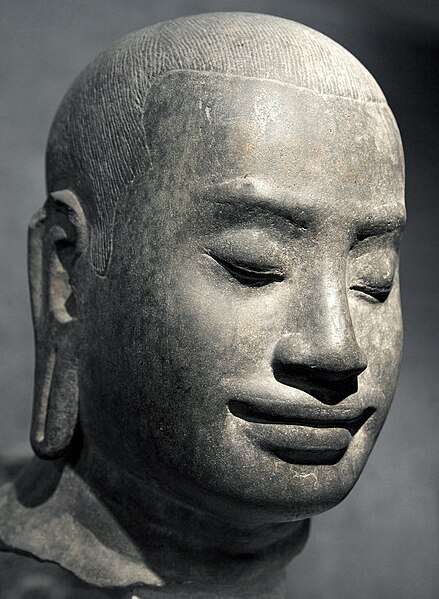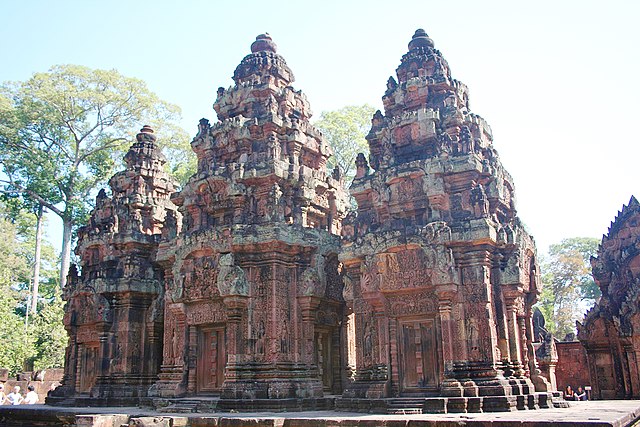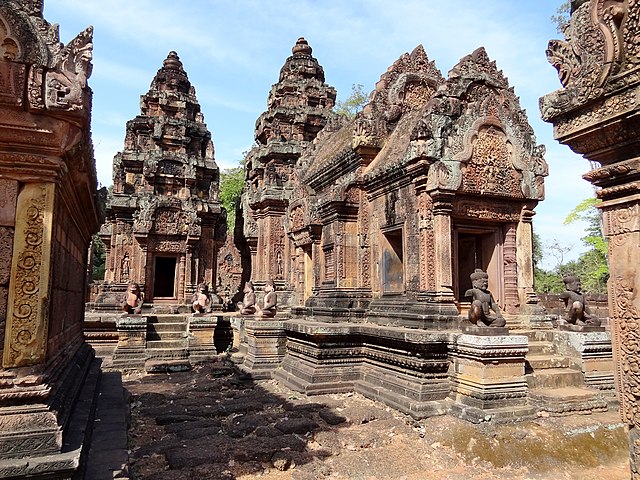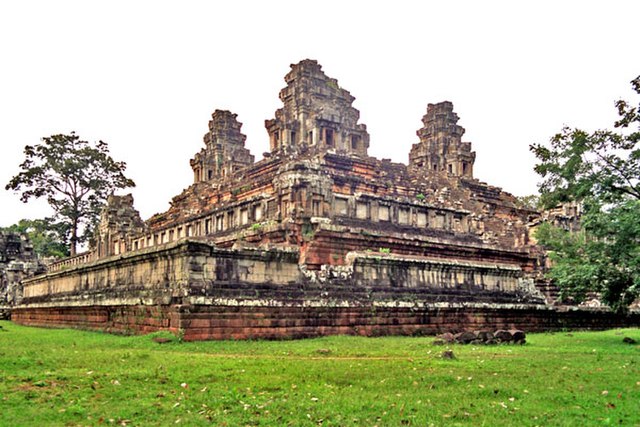The Bayon is a richly decorated Khmer temple related to Buddhism at Angkor in Cambodia. Built in the late 12th or early 13th century as the state temple of the King Jayavarman VII, the Bayon stands at the centre of Jayavarman's capital, Angkor Thom.
Bayon
Carved faces on a tower at the Bayon
According to Angkor-scholar Maurice Glaize, the Bayon appears "as but a muddle of stones, a sort of moving chaos assaulting the sky."
According to scholars, King Jayavarman VII bears a strong resemblance to the face towers of the Bayon.
The Khmer Empire was a Hindu-Buddhist empire in Southeast Asia, centered around hydraulic cities in what is now northern Cambodia. Known as Kambuja by its inhabitants, it grew out of the former civilisation of Chenla and lasted from 802 to 1431. Historians call this period of Cambodian history the Angkor period, after the empire's most well-known capital, Angkor. The Khmer Empire ruled or vassalised most of mainland Southeast Asia and stretched as far north as southern China. At its peak, the Empire was larger than the Byzantine Empire, which existed around the same time.
Temple of Banteay Srei, built 967 A.D.
Bakong, one of the earliest temple mountains in Khmer architecture
Banteay Srei, a 10th-century Cambodian temple dedicated to the Hindu god Shiva
Ta Keo, a state temple built around the year 1000








